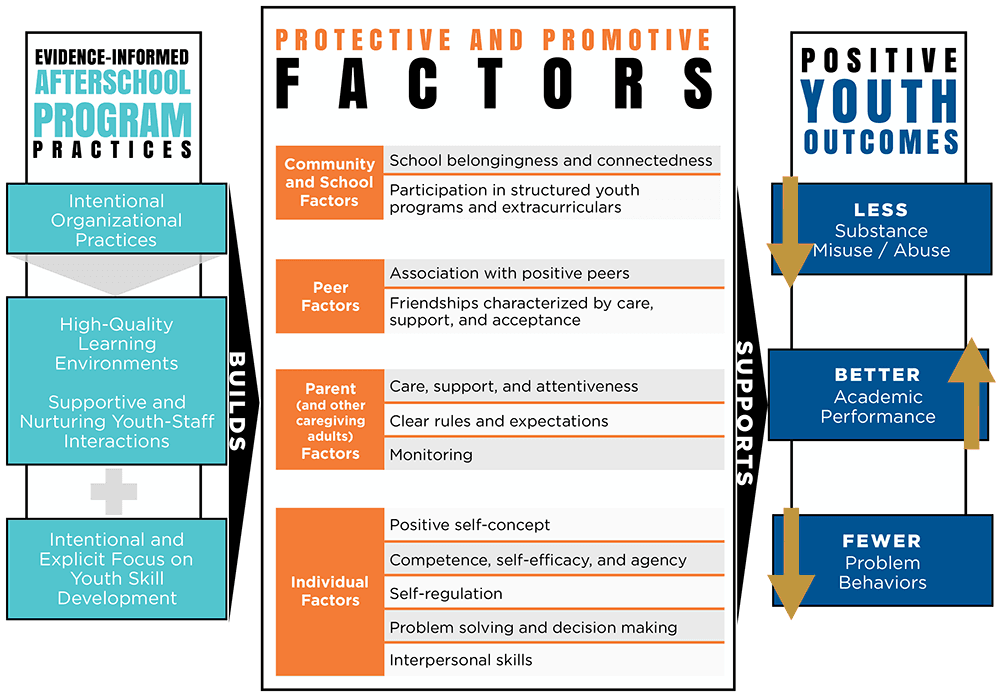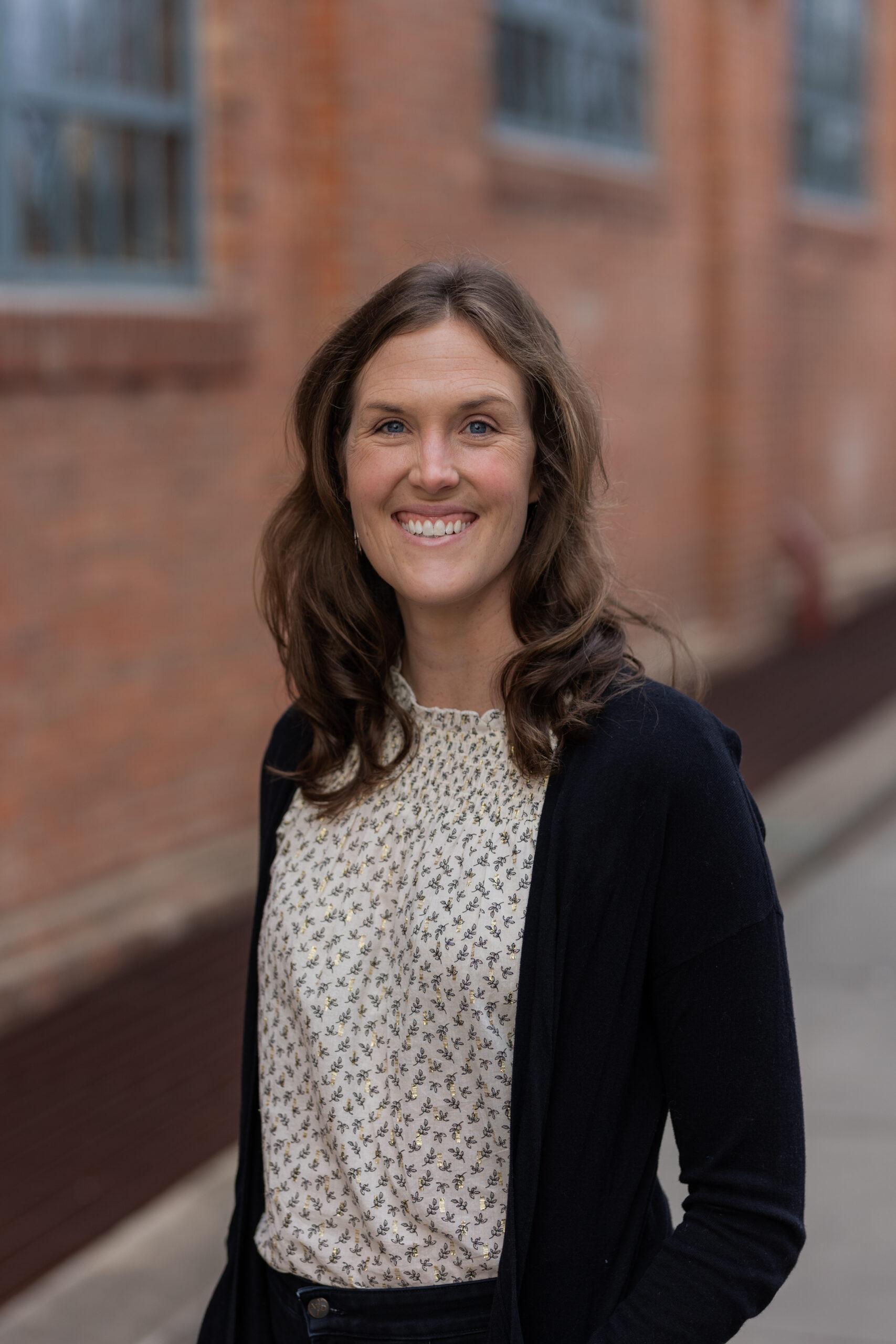In the United States, approximately 10.2 million children participate in afterschool programs; that number is rising steadily. Research shows that high-quality afterschool programs can both support positive youth outcomes—including enhanced academic, social, and emotional skills—and prevent poor youth outcomes.
In recent years, the afterschool field (e.g., practitioners, policymakers, and researchers) has begun to elucidate how afterschool practices can support positive youth development. However, the field would benefit from a more comprehensive and precise understanding of which protective and promotive factors are most likely to lead to positive outcomes for children who participate in afterschool programs. To address this gap in current knowledge, Child Trends, the Claremont Evaluation Center (CEC), and LA’s BEST—a large afterschool program in Los Angeles—developed a white paper for program leaders, policymakers, and other afterschool stakeholders that provides a common approach for addressing three important developmental outcomes in childhood and adolescence: substance misuse and abuse, problem behaviors, and academic performance.
This brief summarizes key findings from the white paper, which included:
- Conducting a review of the literature (limited to meta-analyses) on protective and promotive factors that (1) support positive developmental outcomes among youth, (2) are malleable through intervention, and (3) have direct relevance to the afterschool context
- Summarizing evidence-informed practices demonstrated to foster protective and promotive factors in afterschool settings
- Developing a conceptual model for building protective and promotive factors in afterschool
Case example: LA’s BEST
California ranks among the states with the highest proportion of children participating in afterschool programs—approximately 25 percent. LA’s BEST Afterschool Enrichment Program (LA’s BEST) provides afterschool programming to over 25,000 children, ages 5–12, in 200 elementary schools in the Los Angeles Unified School District (LAUSD), the second-largest school district in the United States.
Previous evaluations of LA’s BEST have pointed to the long-term benefits for participants, including lower drop-out rates and lower rates of involvement in juvenile crime. This white paper explores practices and other factors that contribute to those outcomes.
Protective and promotive factors in afterschool programs
The literature review first identified protective and promotive factors that increase the odds that afterschool programs will support positive youth development. We then narrowed the focus of the review to specific protective and promotive factors that address three key youth outcomes with relevance to afterschool programs and the field of prevention research:
Figure 1 shows the 12 protective and promotive factors identified in the literature. They are organized using an ecological systems approach, which highlights several levels of influence: community and school, peer, parent and other caregivers, and individual.
Figure 1. Protective and Promotive Factors Relevant to Afterschool Programs

Evidence-informed practices in afterschool
The literature review also highlighted four categories of actionable, evidence-informed practices that afterschool program leadership and staff can implement to build protective and promotive factors:
- Intentional organizational practices are those that afterschool leadership can purposefully utilize to support the implementation of high-quality programming in afterschool programs (e.g., leadership engages in thoughtful staff hiring, onboarding, and training practices; leadership fosters collaboration among staff and across settings).
- High-quality learning environments, fostered by staff, can create afterschool environments in which youth feel physically and emotionally safe and supported in various domains of development (e.g., staff offer a variety of activities that align with diverse needs and interests of youth; staff facilitate small, interactive groups).
- Supportive and nurturing relationships enhance staff members’ interactions and communications with, and responses to, youth enrolled in afterschool programs (e.g., staff model and reinforce positive behaviors, empower youth to discover and embrace their unique identities, set and enforce clear rules and expectations).
- Staff can intentionally and explicitly focus on youth skill development through concrete supports that help youth develop malleable individual characteristics and competencies (e.g., supporting the use of effective problem-solving skills, helping children develop positive interpersonal relationship skills, working with children develop their understanding of emotions).
Based on the literature review, CEC and Child Trends developed a conceptual model (Figure 2) that summarizes actionable, evidence-informed steps for building protective and promotive factors in afterschool programs to address youth substance misuse and abuse, problem behaviors, and academic performance.
Figure 2. Evidence-informed Conceptual Model

Conclusions and next steps
Our conceptual model offers an approach that afterschool stakeholders can use to strengthen protective and promotive factors to address substance misuse/abuse, problem behaviors, and academic performance. Next steps will include an evaluation of LA’s BEST’s engagement in these afterschool practices, and of which protective and promotive factors are developed through participation in the program. We hope this model will benefit the broader afterschool program field by offering a shared approach to preventing poor youth outcomes and promoting the overall well-being of youth in afterschool programs.
Authors
© Copyright 2025 ChildTrendsPrivacy Statement
Newsletter SignupLinkedInYouTubeBlueskyInstagram

